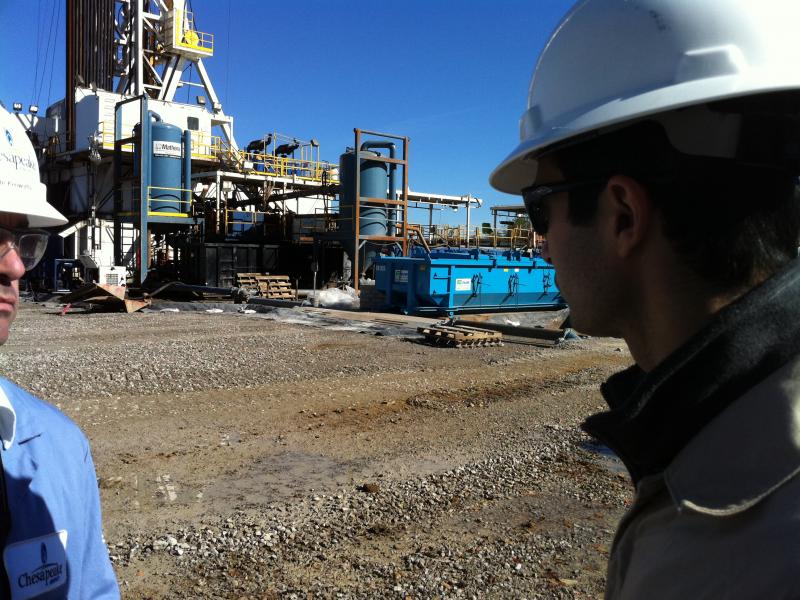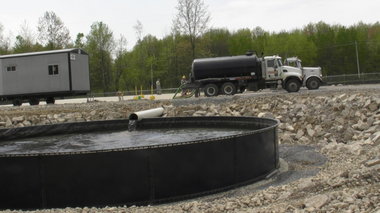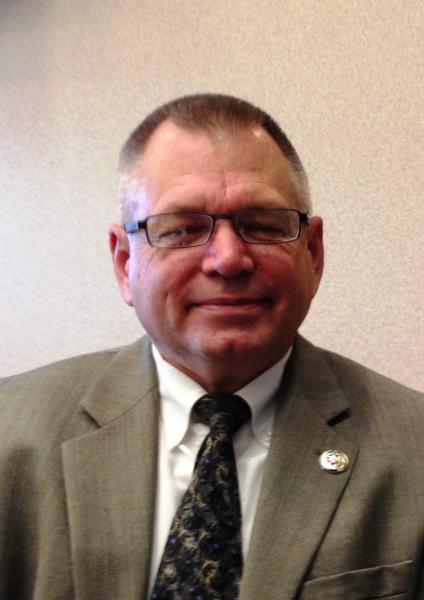After radioactivity, exposure — how much radiation hits us for how long--may be the next biggest attention grabbing word among things nuclear. And, it’s where the regulation of radioactive materials comes in.
 The likes of nuclear fuel rods -- which can kill, and quickly — are under federal regulation. At the other end of the spectrum, low-level, naturally occurring radioactive material -- brine that comes out of the ground in shale drilling for example -- is left to the states to regulate. The likes of nuclear fuel rods -- which can kill, and quickly — are under federal regulation. At the other end of the spectrum, low-level, naturally occurring radioactive material -- brine that comes out of the ground in shale drilling for example -- is left to the states to regulate.
State oversight
Asked why state regulation allows most low-level radioactive waste from hydraulic fracturing in Ohio’s Utica shale fields to go into landfills, Tom Stewart of the Ohio Oil & Gas Association says it's because the radiation level is far below being dangerous.
“A Health Department person told the Kasich administration that you could stand beside a brine truck with a hundred barrels of brine in it for 250 days and you still wouldn’t be exposed to more radiation than in a common dental X-ray.”
NORM and TENORM
Those are the official acronyms for low-level radioactive material: NORM--Naturally Occurring Radioactive Material -- and TENORM, Technically Enhanced NORM. That means its natural radiation has been concentrated by human activity, like recycling drilling mud during fracking operations. And TENORM has to be disposed of in specially built landfills, with dramatically higher user fees.
The question for Tom Stewart actually arose from the budget bill made law in July. Within it, lawmakers not only addressed radioactive waste issues in drilling, they mandated that all drill cuttings — the dirt and broken rock from fracking — be automatically classified NORM.
Terry Lodge is a lawyer for several Ohio environmental groups. He calls that a semantic sidestep and a weakening of real regulation.
“By just changing the name, a word game, the Legislature is making is so that where about 20 percent of what comes out of the ground with deep drilling was formerly considered NORM, now 80 percent to 85 percent will be classified that way -- nd exempted from nearly all regulation.”
Economic development
Lawmakers who supported the change say it was to make regulation simpler by recognizing that all cuttings from drilling are from naturally occurring materials. But, Lodge says legislators were just trying to push the shale boom by making it cheaper for drillers to dump the massive solid waste from modern horizontal drilling in regular landfills instead of special ones, and by doing away with waste reporting and tracking requirements in the process.
 State regulators say “not so.” Ohio Department of Natural Resources Division of Gas and Oil Director Richard Simmers says uncontaminated drill cuttings — which he says most of the cuttings are -- would not trigger special disposal requirements in any event. So there is no cost savings issue. And, as for reporting and tracking, he contends that the requirements are even greater with the new rules. State regulators say “not so.” Ohio Department of Natural Resources Division of Gas and Oil Director Richard Simmers says uncontaminated drill cuttings — which he says most of the cuttings are -- would not trigger special disposal requirements in any event. So there is no cost savings issue. And, as for reporting and tracking, he contends that the requirements are even greater with the new rules.
ODNR focus
Attorney Lodge and others who oppose the state’s approach also say that the Legislature focused enforcement power with the Ohio Department of Natural Resources, where drillers have a long relationship with regulators. They say the other two state agencies involved in regulating radioactive material, Ohio EPA and the Ohio Department of Health, have been shunted aside by what he calls the “undisputed alpha of fracking regulation.”
Ohio EPA Chief Scott Nally counters that his organization is more heavily involved in regulating radioactive waste than ever because of the three-way set up state lawmakers created in which the agencies collaborate.
The questions
Multi-headed or otherwise, Lodge says there is skepticism among his clients and scientists in the environmentalist community over whether Ohio’s NORM and TENORM disposal strategy will be effective at all. He says about 6 percent of current modern landfills are leaking. And that in approximately 100 years’ time they will all leak.
“We’re just kicking the can down the road…and not very far."
Ohio currently has 39 licensed landfills in operation. |